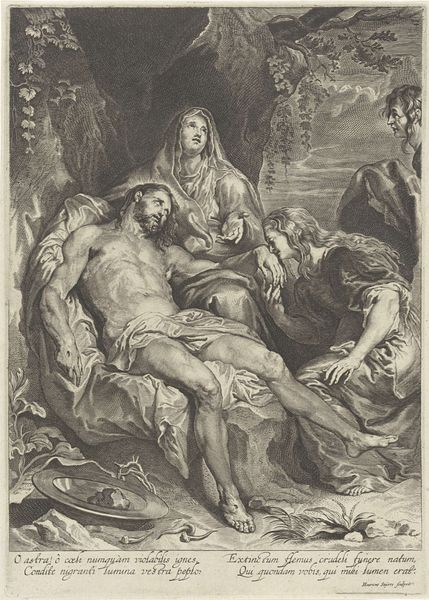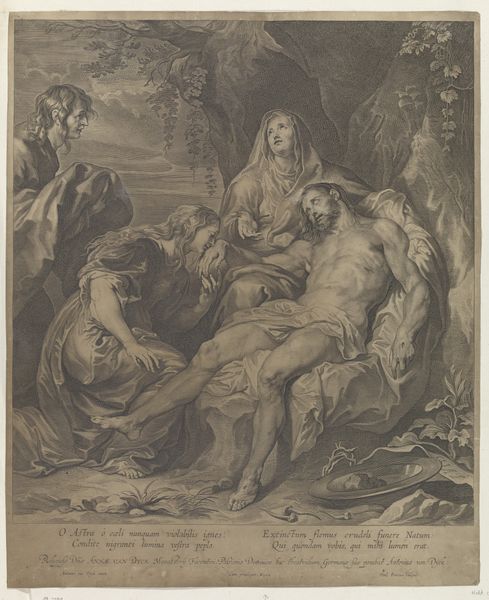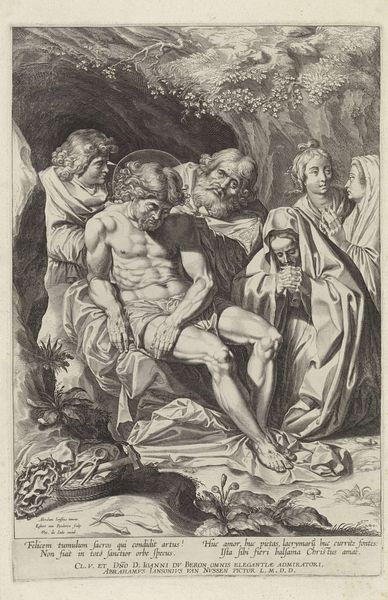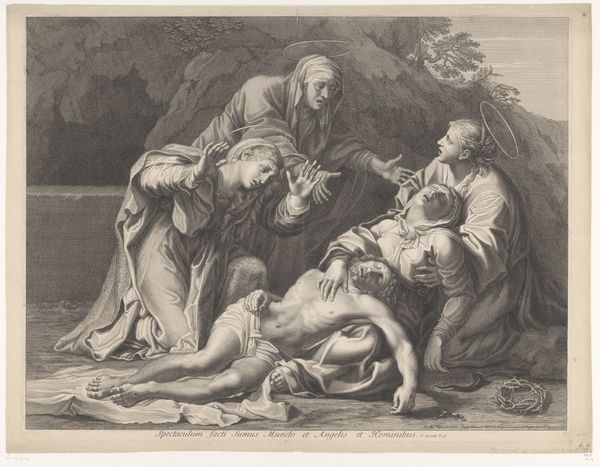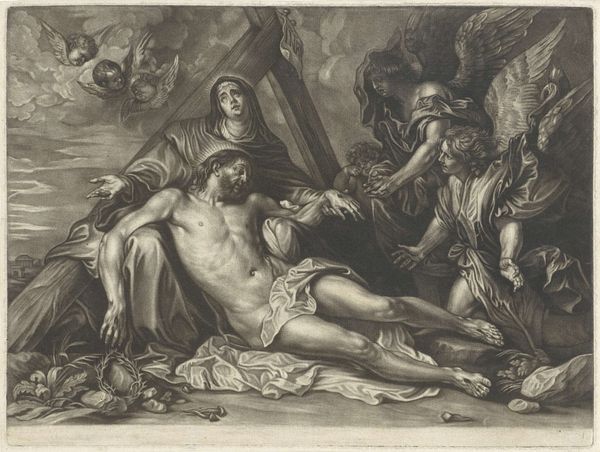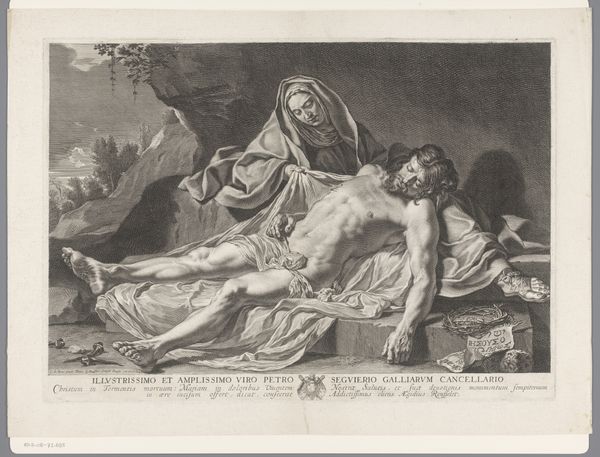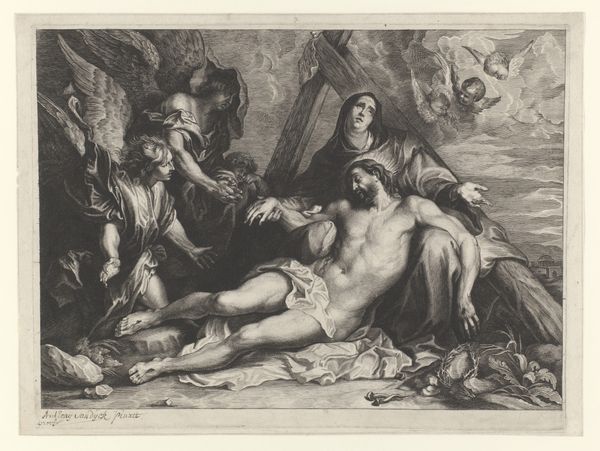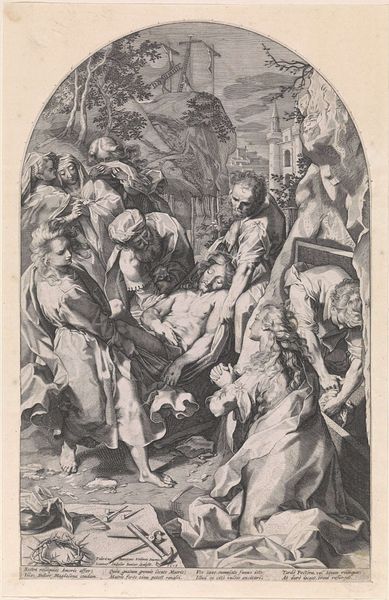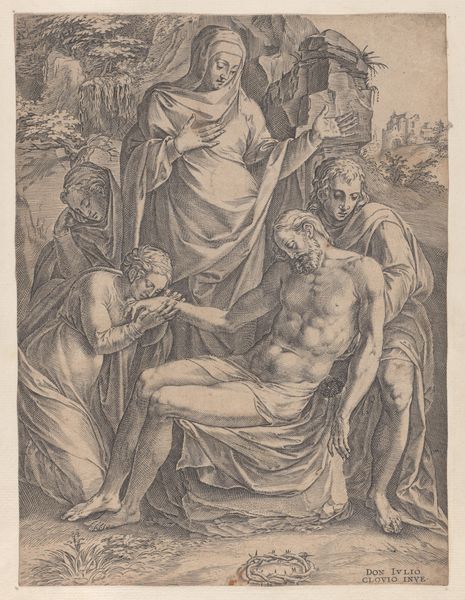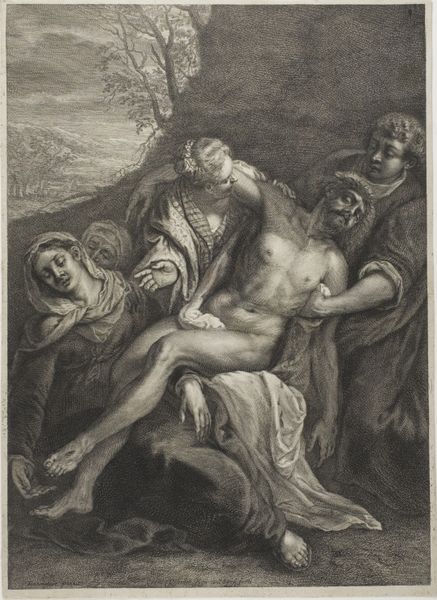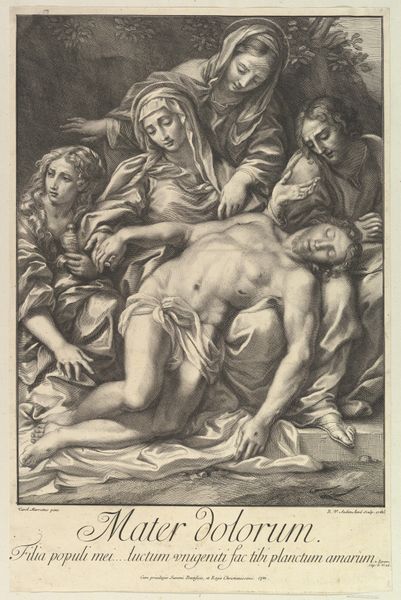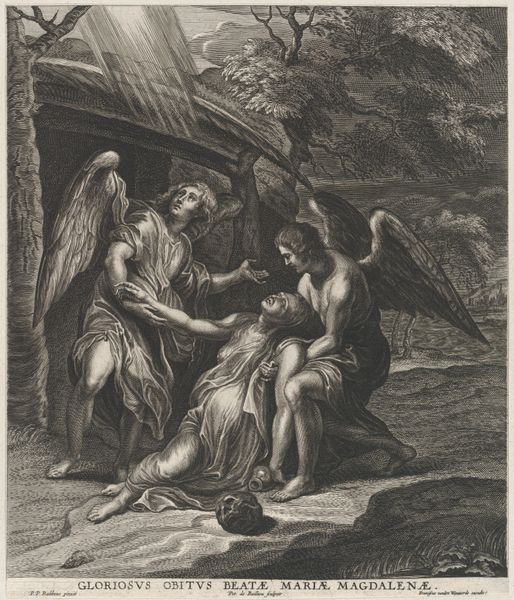
print, etching
#
narrative-art
#
baroque
# print
#
etching
#
figuration
#
chiaroscuro
#
history-painting
Dimensions: height 352 mm, width 416 mm
Copyright: Rijks Museum: Open Domain
Curator: The stark stillness just grabs you, doesn't it? There's such a profound grief hanging in the air. Editor: Indeed. We're looking at an etching, "Bewening van Christus" or "The Lamentation of Christ" from the 17th century, now held at the Rijksmuseum. It was made sometime between 1615 and 1691, and while unsigned, it displays a clear Baroque sensibility. The anonymous artist captured such depth! Curator: Anonymous, but certainly not soulless! I imagine the artist grappling with their own losses, maybe, translating that pain into Christ's fallen body and the anguish etched onto the faces of those around him. Like they're saying, "See? Even divinity isn't spared sorrow." It just pierces right through me. Editor: Precisely. The composition emphasizes this very sentiment. Note the sharp contrasts, a classic example of chiaroscuro, heightening the drama. Observe, for instance, the central, pallid body of Christ supported by the Virgin, with the dynamic drapery and poses further amplifying the emotional intensity. And the oval format adds another layer. Curator: It does feel intimate, contained, like peeking into a private moment of despair. Baroque loves its drama, and I feel like I'm on set, not in a museum. That one mourner almost leans into the action, his gaze intense. But I am also struck by that odd plate, that simple meal offering forgotten to the side? What a juxtaposition! Editor: That inclusion introduces an intriguing detail. Given the narrative, it subtly reinforces Christ's sacrifice – the Eucharist, if you will – against the immediate suffering. Formally, it contributes to the complex, interlocking patterns prevalent in Baroque art. It is the eye lead through an artful set of darks and lights in a perfect symbiosis. Curator: See, for me it's this reminder that even during these epochal moments, life trickles along. We still eat, we still touch the earth. It anchors the divinity to this earthly plane of hurt and humble survival. Makes me think. Editor: Well, there is ample room for speculation as this work encapsulates the quintessential elements of its era's engagement with pathos, presentation, and, dare I say, piety! Curator: Ultimately, though, it is so moving and strange because it speaks to the humanity, right? To the unvarnished pain that makes us all kin. Editor: Agreed. Its formal elegance frames a profoundly human moment.
Comments
No comments
Be the first to comment and join the conversation on the ultimate creative platform.
